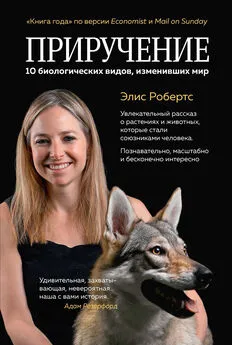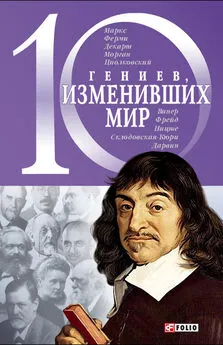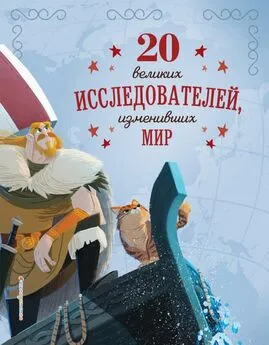Элис Робертс - Приручение. 10 биологических видов, изменивших мир
- Название:Приручение. 10 биологических видов, изменивших мир
- Автор:
- Жанр:
- Издательство:Литагент Аттикус
- Год:2019
- Город:СПб.
- ISBN:978-5-389-16453-6
- Рейтинг:
- Избранное:Добавить в избранное
-
Отзывы:
-
Ваша оценка:
Элис Робертс - Приручение. 10 биологических видов, изменивших мир краткое содержание
Известный британский антрополог и популяризатор науки Элис Робертс знакомит с современными научными теориями взаимодействия эволюции человека и эволюции растений и животных. Эта книга – масштабное повествование, охватывающее тысячи лет истории и подкрепленное новейшими данными исследований в области генетики, археологии и антропологии, и в то же время – острый персональный взгляд, способный изменить наше видение себя и тех, на кого мы повлияли.
«Человек превратился в мощный эволюционный фактор планетарного масштаба; он способен создавать новые ландшафты, менять климат, взаимодействовать с другими видами в процессе коэволюции и способствовать глобальному распространению этих “привилегированных” растений и животных… Погружаясь в историю наших союзников, мы сумели пролить свет и на собственное происхождение». (Элис Робертс)
Приручение. 10 биологических видов, изменивших мир - читать онлайн бесплатно ознакомительный отрывок
Интервал:
Закладка:
Desjardins, A. E. & McCarthy, S. A. (2004), ‘Milho, makka and yu mai: early journeys of Zea mays to Asia’: http://www.nal.usda.gov/research/maize/index.shtml
Doebley, J. (2004), ‘The genetics of maize evolution’, Annual Reviews of Genetics, 38: 37–59.
Gerard, J. & Johnson, T. (1633), The Herball or Generall Historie of Plantes, translated by Ollivander, H. & Thomas, H., Velluminous Press, London 2008.
Jones, E. (2006), ‘The Matthew of Bristol and the financiers of John Cabot’s 1497 voyage to North America’, English Historical Review, 121: 778–795.
Jones, E. T. (2008), ‘Alwyn Ruddock: “John Cabot and the Discovery of America”’, Historical Research, 81: 224–254.
Matsuoka, Y. et al. (2002), ‘A single domestication for maize shown by multilocus microsatellite genotyping’, PNAS, 99: 6080–6084.
Mir, C. et al. (2013), ‘Out of America: tracing the genetic footprints of the global diffusion of maize’, Theoretical and Applied Genetics, 126: 2671–2682.
Piperno, D. R. et al. (2009), ‘Starch grain and phytolith evidence for early ninth millennium BP maize from the Central Balsas River Valley, Mexico’, PNAS, 106: 5019–5024.
Piperno, D. R. (2015), ‘Teosinte before domestication: experimental study of growth and phenotypic variability in late Pleistocene and early Holocene environments’, Quaternary International, 363: 65–77.
Rebourg, C. et al. (2003), ‘Maize introduction into Europe: the history reviewed in the light of molecular data’, Theoretical and Applied Genetics, 106: 895–903.
Tenaillon, M. I. & Charcosset, A. (2011), ‘A European perspective on maize history’, Comptes Rendus Biologies, 334: 221–228.
van Heerwarden, J. et al. (2011), ‘Genetic signals of origin, spread and introgression in a large sample of maize landraces’, PNAS, 108: 1088–1092.
Ames, M. & Spooner, D. M. (2008), ‘DNA from herbarium specimens settles a controversy about the origins of the European potato’, American Journal of Botany, 95: 252–257.
De Jong, H. (2016), ‘Impact of the potato on society’, American Journal of Potato Research, 93: 415–429.
Dillehay, T. D. et al. (2008), ‘Monte Verde: seaweed, food, medicine and the peopling of South America’, Science, 320: 784–786.
Hardy et al. (2015), ‘The importance of dietary carbohydrate in human evolution’, Quarterly Review of Biology, 90: 251–268.
Marlowe, F. W. & Berbescue, J. C. (2009), ‘Tubers as fallback foods and their impact on Hadza hunter-gatherers’, American Journal of Physical Anthropology, 40: 751–758.
Sponheimer, M. et al. (2013), ‘Isotopic evidence of early hominin diets’, PNAS, 110: 10513-10518.
Spooner, D. et al. (2012), ‘The enigma of Solanum maglia in the origin of the Chilean cultivated potato, Solanum tuberosum Chilotanum group’, Economic Botany, 66: 12–21.
Spooner, D. M. et al. (2014), ‘Systematics, diversity, genetics and evolution of wild and cultivated potatoes’, Botanical Review, 80: 283–383.
Ugent, D. et al. (1987), ‘Potato remains from a late Pleistocene settlement in south-central Chile’, Economic Botany, 41: 17–27.
van der Plank, J. E. (1946), ‘Origin of the first European potatoes and their reaction to length of day’, Nature, 3990: 157: 503–505.
Wann, L. S. et al. (2015), ‘The Tres Ventanas mummies of Peru’, Anatomical Record, 298: 1026–1035.
Basheer, A. et al. (2015), ‘Genetic loci inherited from hens lacking maternal behaviour both inhibit and paradoxically promote this behaviour’, Genet Sel Evol, 47: 100.
Best, J. & Mulville, J. (2014), ‘A bird in the hand: data collation and novel analysis of avian remains from South Uist, Outer Hebrides’, International Journal of Osteoarchaeology, 24: 384–396.
Bhuiyan, M. S. A. et al. (2013), ‘Genetic diversity and maternal origin of Bangladeshi chicken’, Molecular Biology and Reproduction, 40: 4123–4128.
Dana, N. et al. (2010), ‘East Asian contributions to Dutch traditional and western commercial chickens inferred from mtDNA analysis’, Animal Genetics, 42: 125–133.
Dunn, I. et al. (2013), ‘Decreased expression of the satiety signal receptor CCKAR is responsible for increased growth and body weight during the domestication of chickens’, Am J Physiol Endocrinol Metab, 304: E909-E921.
Loog, L. et al. (2017), ‘Inferring allele frequency trajectories from ancient DNA indicates that selection on a chicken gene coincided with changes in medieval husbandry practices’, Molecular Biology & Evolution, msx142.
Maltby, M. (1997), ‘Domestic fowl on Romano-British sites: inter-site comparisons of abundance’, International Journal of Osteoarchaeology, 7: 402–414.
Peters, J. et al. (2015), ‘Questioning new answers regarding Holocene chicken domestication in China’, PNAS, 112: e2415.
Peters, J. et al. (2016), ‘Holocene cultural history of red jungle fowl (Gallus gallus) and its domestic descendant in East Asia’, Quaternary Science Review, 142: 102–119.
Sykes, N. (2012), ‘A social perspective on the introduction of exotic animals: the case of the chicken’, World Archaeology, 44: 158–169.
Thomson, V. A. et al. (2014), ‘Using ancient DNA to study the origins and dispersal of ancestral Polynesian chickens across the Pacific’, PNAS, 111: 4826–4831.
Bates, J. et al. (2016), ‘Approaching rice domestication in South Asia: new evidence from Indus settlements in northern India’, Journal of Archaeological Science, 78: 193–201.
Berleant, R. (2012), ‘Beans, peas and rice in the Eastern Caribbean’, in Rice and Beans: A Unique Dish in a Hundred Places, 81-100. Berg, Oxford.
Choi, J. Y. et al. (2017), ‘The rice paradox: multiple origins but single domestication in Asian rice’, Molecular Biology & Evolution, 34: 969–979.
Cohen, D. J. et al. (2016), ‘The emergence of pottery in China: recent dating of two early pottery cave sites in South China’, Quaternary International, 441: 36–48.
Crowther, A. et al. (2016), ‘Ancient crops provide first archaeological signature of the westward Austronesian expansion’, PNAS, 113: 6635–6640.
Dash, S. K. et al. (2016), ‘High beta-carotene rice in Asia: techniques and implications’, Biofortification of Food Crops, 26: 359–374.
Fuller, D. Q. et al. (2010), ‘Consilience of genetics and archaeobotany in the entangled history of rice’, Archaeol Anthropol Sci, 2: 115–131.
Glover, D. (2010), ‘The corporate shaping of GM crops as a technology for the poor’, Journal of Peasant Studies, 37: 67–90.
Gross, B. L. & Zhao, Z. (2014), ‘Archaeological and genetic insights into the origins of domesticated rice’, PNAS, 111: 6190–6197.
Herring, R. & Paarlberg, R. (2016), ‘The political economy of biotechnology’, Annu. Rev. Resour. Econ., 8: 397–416.
Londo, J. P. et al. (2006), ‘Phylogeography of Asian wild rice, Oryza rufipogon, reveals multiple independent domestications of cultivated rice, Oryza sativa’, PNAS, 103: 9578–9583.
Mayer, J. E. (2005), ‘The Golden Rice controversy: useless science or unfounded criticism?’, Bioscience, 55: 726, 727.
Stone, G. D. (2010), ‘The anthropology of genetically modified crops’, Annual Reviews in Anthropology, 39: 381–400.
Wang, M. et al. (2014), ‘The genome sequence of African rice (Oryza glaberrima) and evidence for independent domestication’, Nature Genetics, 9: 982–988.
WHO (2009), Global prevalence of vitamin A deficiency in populations at risk 1995–2005: Geneva, World Health Organization.
Wu, X. et al. (2012), ‘Early pottery at 20,000 years ago in Xianrendong Cave, China’, Science, 336: 1696–1700.
Yang, X. et al. (2016), ‘New radiocarbon evidence on early rice consumption and farming in south China’, The Holocene, 1–7.
Zheng, Y. et al. (2016), ‘Rice domestication revealed by reduced shattering of archaeological rice from the Lower Yangtze Valley’, Nature Scientific Reports, 6: 28136.
Bourgeon, L. et al. (2017), ‘Earliest human presence in North America dated to the last glacial maximum: new radiocarbon dates from Bluefish Caves, Canada’, PLOS ONE, 12: e0169486.
Cieslak, M. et al. (2010), ‘Origin and history of mitochondrial DNA lineages in domestic horses’, PLOS ONE, 5: e15311.
Jonsson, H. et al. (2014), ‘Speciation with gene flow in equids despite extensive chromosomal plasticity’, PNAS, 111: 18655-18660.
Kooyman, B. et al. (2001), ‘Identification of horse exploitation by Clovis hunters based on protein analysis’, American Antiquity, 66: 686–691.
Librado, P. et al. (2015), ‘Tracking the origins of Yakutian horses and the genetic basis for their fast adaptation to subarctic environments’, PNAS, E6889-E6897.
Librado, P. et al. (2016), ‘The evolutionary origin and genetic make-up of domestic horses’, Genetics, 204: 423–434.
Librado, P. et al. (2017), ‘Ancient genomic changes associated with domestication of the horse’, Science, 356: 442–445.
Malavasi, R. & Huber, L. (2016), ‘Evidence of heterospecific referential communication from domestic horses (Equus caballus) to humans’, Animal Cognition, 19: 899–909.
McFadden, B. J. (2005), ‘Fossil horses – evidence for evolution’, Science, 307: 1728–1730.
Morey, D. F. & Jeger, R. (2016), ‘From wolf to dog: late Pleistocene ecological dynamics, altered trophic strategies, and shifting human perceptions’, Historical Biology, DOI: 10.1080/08912963.2016.1262854
Orlando, L. et al. (2008), ‘Ancient DNA clarifies the evolutionary history of American late Pleistocene equids’, Journal of Molecular Evolution, 66: 533–538.
Orlando, L. et al. (2009), ‘Revising the recent evolutionary history of equids using ancient DNA’, PNAS, 106: 21754-21759.
Orlando, L. (2015), ‘Equids’, Current Biology, 25: R965-R979.
Outram, A. K. et al. (2009), ‘The earliest horse harnessing and milking’, Science, 323: 1332–1335.
Owen, R. (1840), ‘Fossil Mammalia’, in Darwin, D. R. (ed.), Zoology of the voyage of H.M.S. Beagle, under the command of Captain Fitzroy, during the years 1832 to 1836, 1(4): 81-111.
Pruvost, M. et al. (2011), ‘Genotypes of predomestic horses match phenotypes painted in Palaeolithic works of cave art’, PNAS, 108: 18626-18630.
Smith, A. V. et al. (2016), ‘Functionally relevant responses to human facial expressions of emotion in the domestic horse (Equus caballus)’, Biology Letters, 12: 20150907.
Sommer, R. S. et al. (2011), ‘Holocene survival of the wild horse in Europe: a matter of open landscape?’, Journal of Quaternary Science, 26: 805–812.
Vila, C. et al. (2001), ‘Widespread origins of domestic horse lineages’, Science, 291: 474–477.
Vilstrup, J. T. et al. (2013), ‘Mitochondrial phylogenomics of modern and ancient equids’, PLOS ONE, 8: e55950.
Waters, M. R. et al. (2015), ‘Late Pleistocene horse and camel hunting at the southern margin of the ice-free corridor: reassessing the age of Wally’s Beach, Canada’, PNAS, 112: 4263–4267.
Wendle, J. (2016), ‘Animals rule Chernobyl 30 years after nuclear disaster’, National Geographic, 18 April 2016.
Xia, C. et al. (2014), ‘Reintroduction of Przewalski’s horse (Equus ferus przewalskii) in Xinjiang, China: the status and experience’, Biological Conservation, 177: 142–147.
Yang, Y. et al. (2017), ‘The origin of Chinese domestic horses revealed with novel mtDNA variants’, Animal Science Journal, 88: 19–26.
Adams, S. (1994), ‘Roots: returning to the apple’s birthplace’, Agricultural Research, November 1994: 18–21.
Читать дальшеИнтервал:
Закладка:










